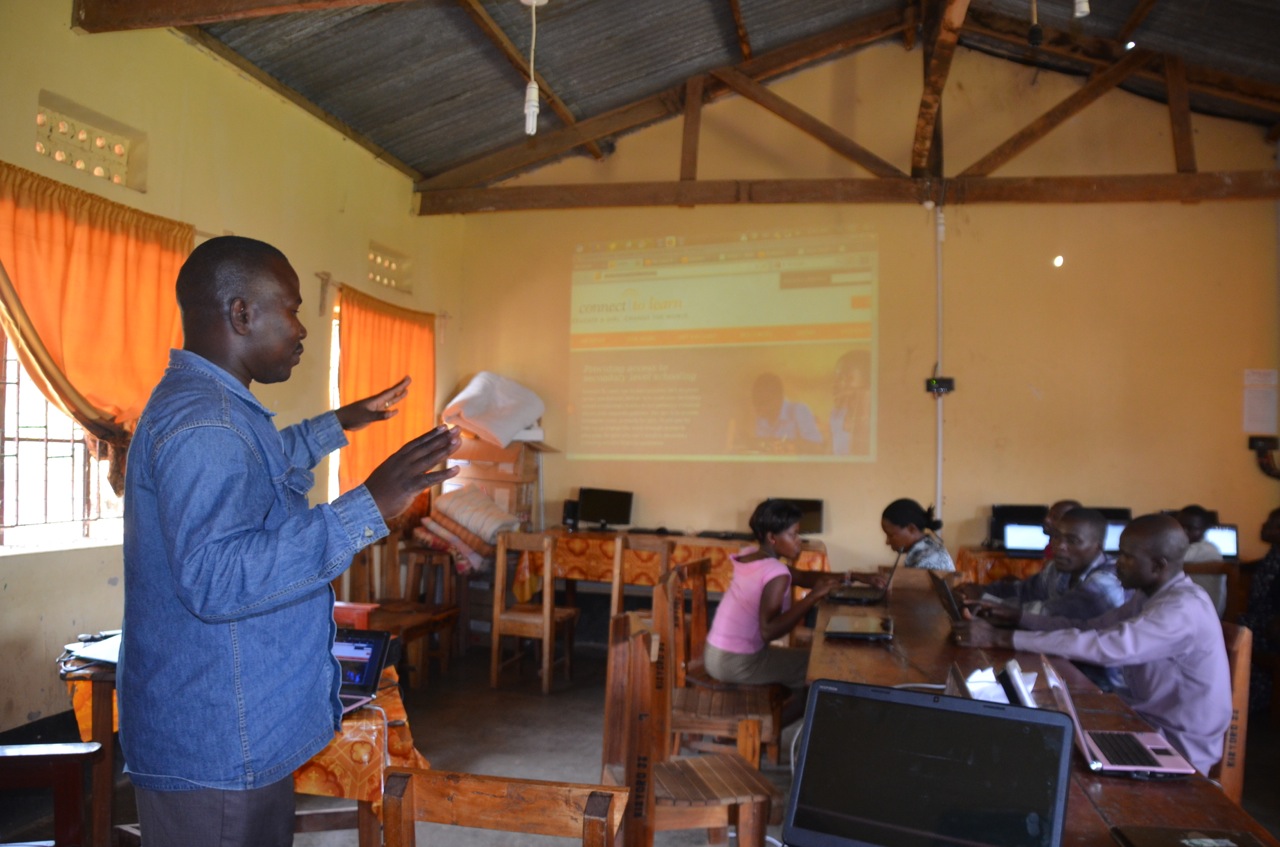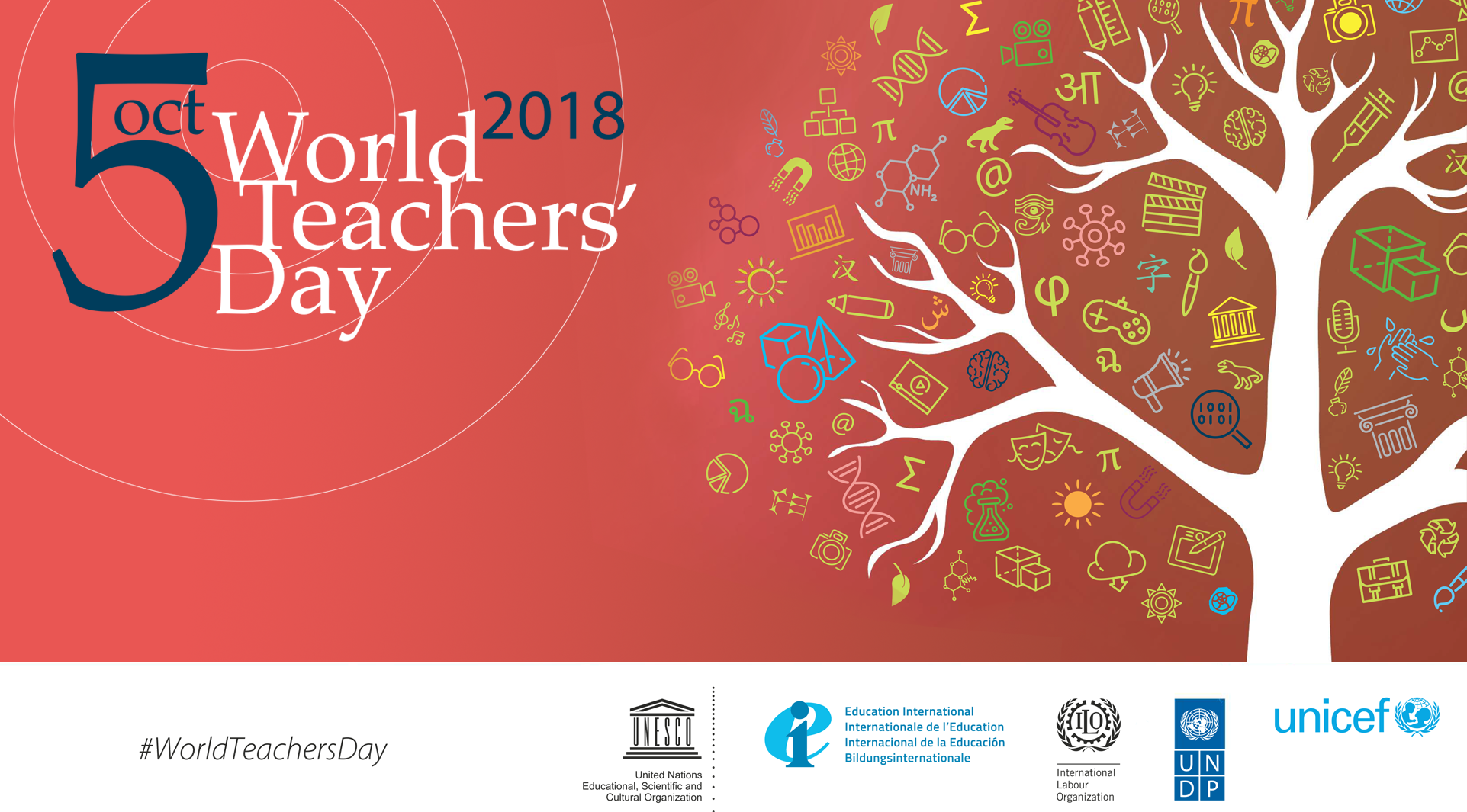Even with all our new tech, quality learning still requires quality teachers: Reflections for World Teachers Day
This NORRAG Highlights is published on the occasion of World Teachers Day, celebrated annually on 5 October. Tara Stafford Ocansey is the Senior Education Technology Specialist of the Connect To Learn initiative of the Center for Sustainable Development, Earth Institute, Columbia University. In this blog post, the author reminds us of the central role of teachers in learning processes, and presents a Connect to Learn initiative that aims at improving quality learning via integrating ICT tools in teaching practices.
For most of us, if we think back on who in our lives have had the most profound impact on us, who pushed us to pursue our dreams, who provided us with examples of what a responsible, self-possessed adult looks like outside of our own families, we think of our teachers. Here in the United States, as in many parts of the world, our culture is great at singing the praises of teachers for these reasons. Teachers care for us, and help guide our journeys to figuring out what roles we will play in economic, civic and social life. Yet when it comes to recognizing the immense contribution of teachers through tangible ways that improve their status, we continue to fall short. World Teachers’ Day is recognized every year on October 5th to commemorate the 1966 adoption of the ILO/UNESCO Recommendation concerning the Status of Teachers. The Recommendation addressed teachers’ rights and responsibilities, and standards for their preparation, ongoing professional development, and classroom conditions. Further, it sought to raise the status of teachers by calling for teachers’ participation in education decision making and their rights to collective bargaining. With regard to salaries, the Recommendation states that teachers’ salaries should “reflect the importance to society of the teaching function”.[i] Fifty-two years since the Recommendation’s adoption, can we say that our societies have achieved these standards?
We ask these questions about the status of teachers in 2018 as global demand for quality education is higher than it’s ever been, with more countries extending policies for free, compulsory basic education from primary to lower secondary to upper secondary levels each year. This increasing demand, in turn, charges us with the daunting task of recruiting what UNESCO estimates to be 69 million teachers needed to reach Sustainable Development Goal 4’s goal of reaching universal primary and secondary education by 2030.[ii] How can we meet this goal without fully living up to the standards outlined in 1966, and raising the status of the teaching profession?

Teacher training in Uganda
The call to raise the status of teachers and meet the teacher shortage gap is at odds with a growing body of expert opinions and literature that are exploring the possibility that advancements in technology may actually render the teacher’s role as we know it obsolete. In India, for example, Pratham has piloted a Hybrid Learning initiative based on the notion that children must “learn to learn,” and that much can be facilitated through the use of innovative, locally relevant digital resources instead of traditional schooling. The initiative engages learners in non-formal learning environments that are facilitated with the assistance of parents and community members, but where the learning itself is largely self-directed by students using content populated on tablets. Initial findings observed that, without a teacher present to provide structured learning time, students honed their non-academic skills of teamwork, listening and self-negotiating.[iii]
Another example is the global trend of automatizing how teachers teach by doing the hard work of lesson planning for them. The Partnership Schools for Liberia initiative, launched in 2016 to take over failing public schools, found that learning in the 93 schools taking part in the initiative had improved by 60% on average, however upon a closer look, it becomes apparent that these seemingly promising outcomes for certain schools are exacerbating problems at the remaining public schools not taking part in the initiative. One of the largest private partners in the initiative, Bridge International Academies (BIA), reportedly turned away students and low-performing teachers, thereby increasing class size and failing to address the bigger problem of teacher quality for the population not participating in the initiative.[iv] Critics further point out that, while a scripted, consistent curriculum may help in increasing outcomes in basic literacy and numeracy, treating teachers as assembly line operators churning out literate children will do little in helping poor countries move past basic skills to develop their next generation to be one of problem-solvers and critical thinkers. For that, we need well-trained, empowered teachers who are encouraged to approach their curriculum with creativity and a sense of ownership over the content.
The question about the role of teachers in the 21st century is really a question about the purpose of education. Are we simply trying to impart specific sets of skills needed for the kinds of employment we know currently exist, or do we want to develop full, curious human beings capable of lifelong learning, creative and critical thinking, and contributions to civic life? If the answer is closer to the latter, then the question becomes – how do we continue to raise the status of teachers and improve the quality of teaching while also being open to the roles new technologies can play in transforming what quality teaching and learning looks like?
The Connect To Learn initiative – a partnership of the Center for Sustainable Development at Columbia University’s Earth Institute and Ericsson – has been working toward such a symbiotic approach since 2010 – improving teachers’ capacities for delivering learner-centered, inquiry-based lessons with the aid of technology tools in their classrooms. A new report highlights some of the work Connect To Learn has done to improve teacher pedagogy for specific teaching challenges in areas such as improving early grade literacy in local languages and enabling teachers to effectively integrate technology tools in their teaching practice. Connect To Learn’s programs take a collaborative action research approach that engages teachers directly in the process of identifying best practices for improving education quality in schools, using their inputs to inform ongoing program design and implementation in an iterative feedback loop.
Connect To Learn’s largest project to date, implemented in 31 schools in Myanmar starting in 2015 with support from UKaid and in partnership with the Myanmar Ministry of Education, has found that teachers’ increased use of technology in their practice has led students to find their lessons more interesting, and to find the content more digestible with the help of visual and auditory resources introduced by their teachers.[v] While initial findings showed that teachers’ use of ICT had increased and that they were using the Internet to access a variety of teaching and learning resources, sustained support to their schools would be needed to see concrete improvements in learning outcomes. It is widely recognized that ongoing teacher professional development is critical to improve the quality of education, however factors such as slow uptake of pedagogical methods, lax implementation of policies, shortage of funds and personnel, shortage of expertise available equitably across regions, lack of incentives for the profession, limited time, and difficult access due to distance—all contribute to gaps in teacher training, even as training needs persist and grow.

Hans W Students in Tanzania
In order to provide ongoing teacher professional development support to rural schools in a way that could be sustained by the Ministry of Education beyond the project period, the Connect To Learn team developed a Virtual Reality (VR) teacher training platform with funding support from Qualcomm Wireless Reach. Using VR, teacher training can be facilitated in a comfortable and individual virtual space where teachers can practice pedagogical approaches and new ways of integrating technology tools at their convenience during planning periods. It reduces the hassle of high costs associated with training venues, per diems, travel to training sites or missing school days. While introduction of technology does not completely eliminate the need for in-person trainings, it is an approach that can address specific pedagogical challenges while also building teachers’ comfort with using technology for teaching. The VR platform is currently being rolled out to the 31 Myanmar schools involved with the project through a Training of Trainers model. The Connect To Learn team trained members of the Department of Basic Education (DBE), who in turn were supported to design and implement their own trainings with the teachers. Enthusiasm and quick uptake of the VR platform among the DBE members has been promising so far. Endline data for the project is scheduled to be collected in late 2018 and findings will be released in 2019.
There are many more examples of innovative projects that are working with systems of education and teachers directly to improve the quality of teaching and learning through integration of ICT tools in ways that seek to build up teachers and their skills, thereby raising their status. For this year’s World Teachers Day, let’s remember all the ways that our teachers helped prepare us for life in the world – from developing our basic literacy and numeracy skills to encouraging us to believe in ourselves and consider divergent perspectives on critical issues of our time. Then, let’s commit ourselves to giving the teaching profession the respect and status it deserves through policies and programs that move us toward the promise of quality education and lifelong learning for all by 2030.
[i] http://unesdoc.unesco.org/images/0016/001604/160495e.pdf
[ii] https://en.unesco.org/commemorations/worldteachersday
[iii] Singh, R., Sharma, N., Verma, K. (2016). An Example of Participatory Action Research in India: Hybrid-Learning Program. Pratham.
[iv] https://www.devex.com/news/early-results-did-private-outsourcing-improve-liberia-s-schools-90943
[v] Shin, H., Iyengar, R., Stafford, T. (2018) Connect To Learn Myanmar – Phase Two Monitoring & Evaluation Data Report
Contribute: The NORRAG Blog provides a platform for debate and ideas exchange for education stakeholders. Therefore if you would like to contribute to the discussion by writing your own blog post please visit our dedicated contribute page for detailed instructions on how to submit.
Disclaimer: NORRAG’s blog offers a space for dialogue about issues, research and opinion on education and development. The views and factual claims made in NORRAG posts are the responsibility of their authors and are not necessarily representative of NORRAG’s opinion, policy or activities.

